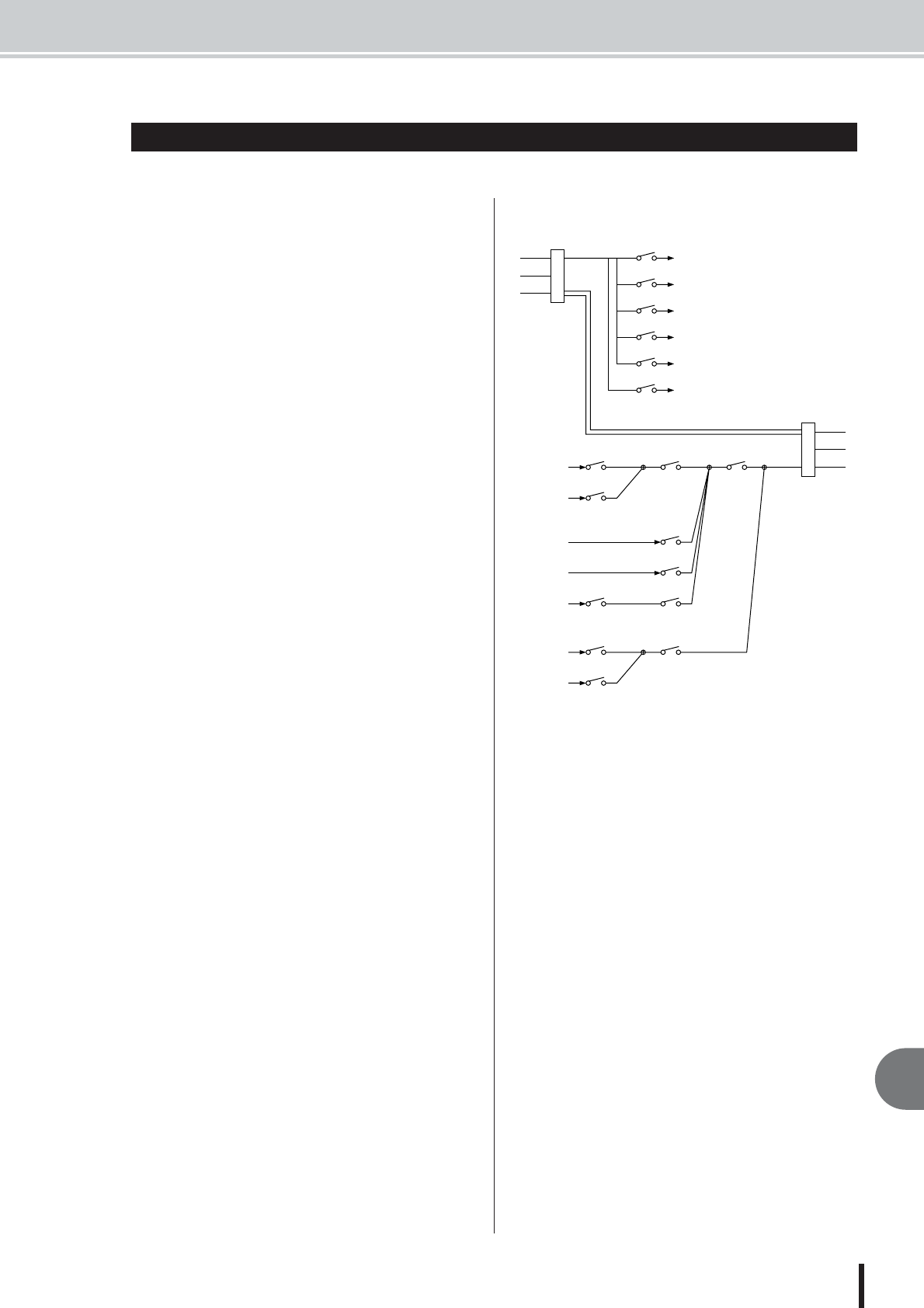
MIDI data format
215
AW1600 Owner’s Manual
Appendix
1. Functions
1.1. Scene Change
The settings of the [MIDI PROGRAM CHANGE TABLE] specify
the scene that is recalled when a Program Change message is
received.
The settings of the [MIDI PROGRAM CHANGE TABLE] specify
the program number that is transmitted when a scene is recalled. If
more than one program number has been assigned to that scene
memory number, the lowest-numbered program number will be
transmitted.
1.2. MMC Control
These messages allow basic recorder operations such as STOP/
PLAY/REC/LOCATE.
If you select the MIDI SETUP menu item MMC MASTER, MMC
commands will be transmitted according to the operation of the
transport. If you select MMC SLAVE, the internal recorder will oper-
ate according to the received MMC commands.
1.3. Effect Control
Depending on the type of effect, note-on/off messages can be used
for control.
These settings are made for the parameters of each effect.
1.4. Pitch Fix Control
When the Pitch Fix mode is engaged, note-on/off messages can be
used to control pitches.
1.5. MIDI Clock transmission
If you set MIDI OUT to MIDI CLOCK, MIDI clock messages can be
transmitted during playback or recording.
In MIDI Clock transmission mode, Song Position Pointer and Start/
Stop/Continue commands will also be issued, and during playback or
recording, MIDI Clock will be transmitted according to the MIDI
Tempo Map.
1.6. MTC transmission (MTC Master)
If you set MIDI OUT to MTC, MTC can be transmitted during play-
back or recording.
1.7. MTC reception (MTC Slave)
If you set MTC MODE to SLAVE, the internal recorder will operate
in synchronization with MTC messages received from the MIDI IN
connector.
1.8. Realtime control of parameters
Control changes can be used to send/receive internal parameters in
realtime.
1.9. MIDI Remote
The faders, SEL keys, and RTZ / FF / REW / STOP / PLAY / REC
keys can be used to control an external MIDI device.
In PRESET mode, operating the above controllers will transmit
MIDI data according to the preset settings of the AW1600.
In USER mode, operating the above controllers will transmit the
MIDI data that you specify.
2. MIDI data flow diagram
3. AW1600 settings and operation
3.1. MIDI Setup
Set basic MIDI operation.
3.1.1. MIDI OUT
Turn on/off the MIDI output other than MTC/MIDI CLOCK.
3.1.2. IN PORT
Specify the input port for MIDI communication.
3.1.3. OUT PORT
Specify the output port for MIDI communication.
3.1.4. THRU
Set the MIDI through function.
3.1.5. SYNC OUT
Turn on/off the output of MTC/MIDI CLOCK.
3.1.6. MMC MODE
Select whether the AW1600 will be the MMC MASTER or SLAVE.
3.1.7. MMC Dev.
Specify the ID number that will be used when transmitting or receiv-
ing MMC commands.
3.1.8. MTC SYNC MODE
Select whether the AW1600 will be the MTC MASTER or SLAVE.
MIDI data format
MIDI OUT
USB-1 IN
MTC SLAVE
THRU
MTC (MTC Slave)
USB-2 IN
MIDI IN
EFF MIDI
NOTE ON/OFF (Effect Control)
PGM CHG
PROGRAM CHANGE (Scene Recall)
PROGRAM
CHANGE
CTRL CHG
CONTROL CHANGE (Parameter Edit)
MMC SLAVE
MMC (Transport Control)
LEARN
Channel Message/Exclusive Message
(MIDI REMOTE Learn)
USB-1 OUT
USB-2 OUT
MIDI OUT
PGM CHG SW1
CONTROL
CHANGE
CTRL CHG
MTC
MIDI OUT (MTC) SW4
MIDI
CLOCK
SW1 :REMOTE OFF
SW2 :REMOTE ON (Remote)
SW3 :REMOTE ON
SW4 :REMOTE OFF or
REMOTE ON (Normal)
MIDI OUT (CLK)
MMC
MMC MASTER SW4
REMOTE
Transport
SW2
REMOTE
Fader/Sel
SW3


















